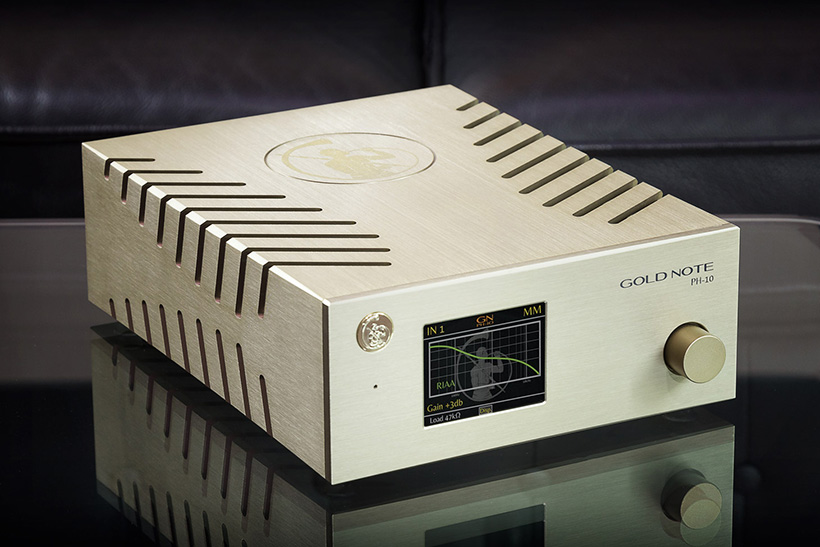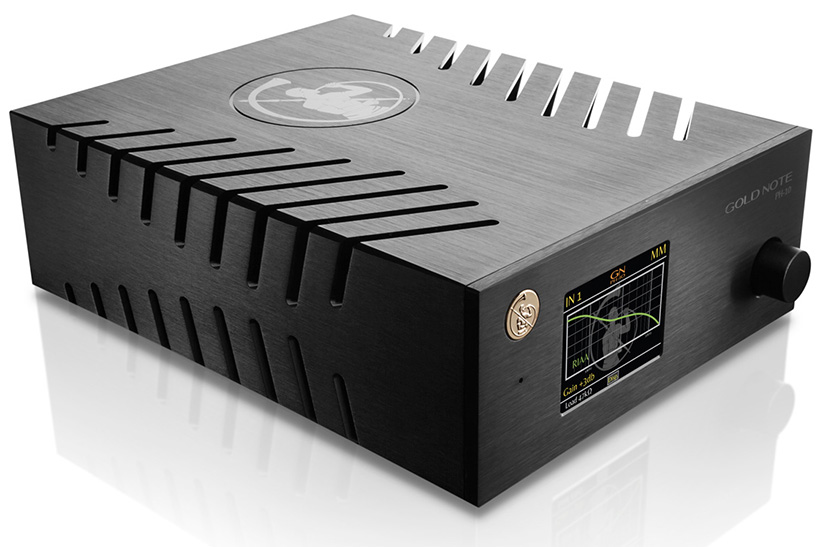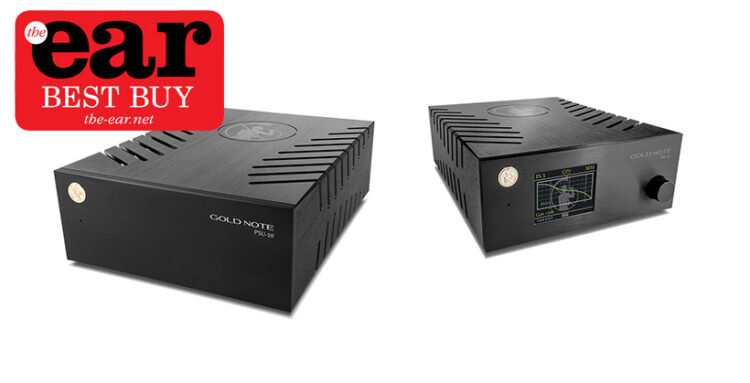Italy has a long tradition of producing high quality audio equipment but Gold Note only came to my attention in recent months. Based in the Florence area, this is a company determined to cover every audio enthusiast’s needs, with a range of turntables, cartridges, CD players, DACs, amplifiers and loudspeakers. They are now being distributed in the UK by Hampshire based Audio Pinnacle and I hope that they gain a foothold in the highly competitive UK market. In due course I hope to be able to report to you on how other parts of the Gold Note portfolio perform. However, the first pieces to arrive with me are the two small form factor boxes which comprise the PH10 phono stage and matching PSU10 power supply. First impressions count and this one was extremely positive. Although not large, these are weighty devices, the casing of the PH10 is made from a solid block of aluminium. The front has 2.8” TFT colour display and a single knob that controls all the settings – and there are a lot of settings! The good news is that if preferred, the screen can be left off once the appropriate setting selections have been made. The Single Knob Control (as Gold Note calls it) makes changing settings very straightforward – no fiddly dipswitches here! There is no remote control, which for me would have been the icing on the cake but it’s not really necessary.

This phono stage will work with almost any cartridge, whether moving magnet or moving coil. There are four gain options available which are -3dB, 0dB,+3dB and +6dB, and nine different internal load options from 10 Ohms to 47k ohms. So far so standard decent phono stage fare. However, next up is the option to select a preferred EQ curve. The options are RIAA, Decca London and American-Columbia but these can then be tweaked by the user to his or her preference.
The back panel is a busy piece of real estate. There are RCA inputs for two separate tone arms, which will be a really strong selling point to the user who mounts two different arms and cartridges on their turntable. Output can be via a pair of RCA or XLR connections. There is an IEC mains socket and two DIN style sockets, one for power input from a PSU and the other for output to an optional tube output stage, and a master switch. I am looking forward to trying the tube output stage in due course but it did not form part of the review system.
Having tried a few different options for my Linn Ittok mounted Lyra Kleos on my modified Lingo4 powered LP12, I settled for -3dB gain with 220 Ohm loading and the RIAA curve selected. Most of my listening was done with those values, although I did try the different EQ options.

During the review period I also played host to a pair of LP12s, on paper at least rather more modestly furnished than my own, with Project arms and Ortofon 2M Bronze moving magnet cartridges. The really good news is that through the PH10 both these LP12s produced some wonderful sounds, making the PH10 an aspirational phono stage for those of us with pockets more suited to the less esoteric end of the vinyl replay spectrum.
Sound quality
But back to my review. The first thing I noticed was how quiet this device is. I could detect nothing at all through the loudspeakers when no record was playing, just inky black silence. I played a truly eclectic selection of music, reflecting 50+ years of record buying. Pink Floyd, JJ Cale, Eric Clapton, Fairport Convention, Colosseum, Shpongle, George Ezra, the Rolling Stones, the Beatles, the Beach Boys, Tom Petty, Jimi Hendrix, Neil Young, Santana, quite a lot of classical and some ECM jazz all came and went and much more besides.
And what of those EQ curve choices? The most widely applied these days is RIAA and quite honestly for the vast majority of my listening that is where I left the PH10. The Decca London one seemed to add some additional air to the higher frequencies. I played some L’Oiseau-Lyre recordings of The Academy of Ancient Music under Christopher Hogwood and I did slightly prefer these with the Decca London option. However, what was gained in the added spaciousness was offset by a slight loss in the perceived soundstage. The American Columbia option did not seem to improve any aspect of the sound so I did not linger with it for long. However, I do plan to explore them further as these two wonderful music makers are set for a long stay in my room.

I found nothing but pleasure listening through the Gold Note PH10. I really could find no vices – just music delivered as I love to hear it. And then I added the PSU via the dedicated umbilical. Now all the noisy power stuff was handled away from the delicate audio circuits and we were in a completely different league of music making. The same selection of albums was played and sounded even more engaging and indeed compelling. The bass, which was already good, took on extra weight and gained an almost palpable realism, the midrange became even clearer and more dynamic and the high frequencies were simply sublime. My Harbeth Super HL5+ 40thAnniversary Editions were absolutely singing. The PH10 on its own represents a terrific audio treat but adding the PSU takes it, in my humble opinion, to a level which I have rarely been privileged to hear. By all means start out with the PH10 alone, but do give the PSU a chance. It turns a great phono stage into one which I believe can hold its own against any competitor, regardless of price.
If you use a turntable as your preferred or main musical source I urge you to hunt down and audition the PH10. At over £1,200 it is not a bargain basement product but if you can then find the extra £864 for the PSU you will never regret your investment. These are genuinely exceptional sounding devices and will give you years of pleasure from your precious record collection.


